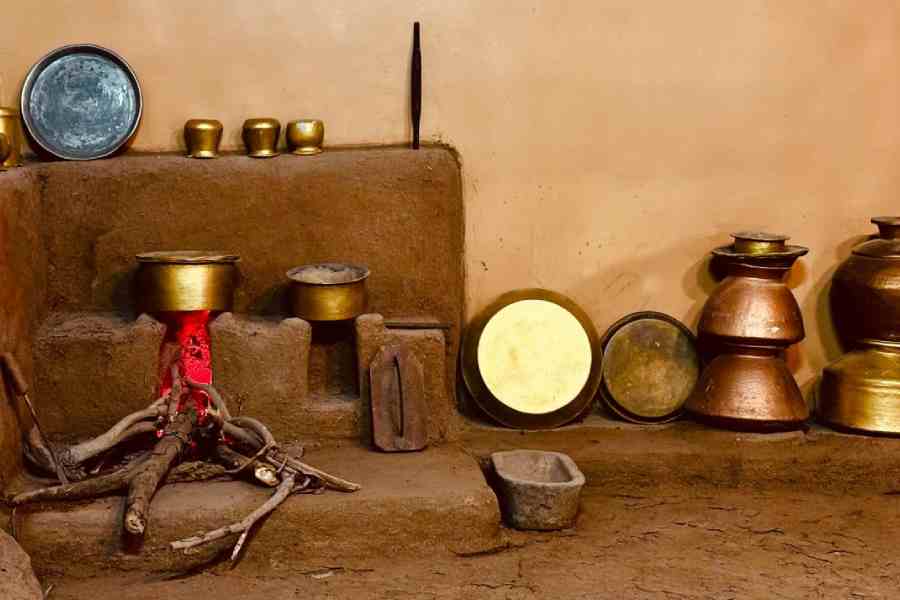We would wake up in the morning to the sound of coal being scraped into a scuttle for the earthen oven (unon) which would soon be followed by the acrid smell of burning coal and ghnutey, a sort of combustible cake made from cow dung. This would happen very early in the morning. We would wake up, once again, to the racket of stone grinding on stone as our daily help started pulverising the spices that would be needed that day on the shil-nora (a large, pestle-shaped stone that crushed and ground whole spices on another piece of flat stone). The pastes would then be arranged in small, separate mounds on a small brass (kansha) dish. A large aluminium kettle would already be bubbling for the morning tea. The smell of boiling milk would follow and we would hear the sound of rice being chaffed by my grandmother on the household kulo (a flat, chaffing dish made with thin woven cane).
Our kitchen had a series of implements that have disappeared from modern kitchens. I remember multicoloured woven baskets (jhuri) to keep fruits and vegetables, aluminium bowls for cleaning fish and meat, and giant iron woks for cooking. My grandmother would squat on the floor cutting vegetables with a bonti (a long, curved blade mounted on a piece of wood and sharpened regularly) on our long verandah, while my mother did the same inside the kitchen for fish or meat next to the tap — we did not have a sink in those days.
The kitchen shelves were full of small containers for whole spices. A grinding stone (shil) stood in the corner, with two pestles kept separately, one for grinding the spices, the other for making onion or garlic paste. The grinding stone was kept in perfect condition by a wiry, older man who banged away at the stone with his hammer and chisel. We had different types of boris — small dollops of ground lentil paste painstakingly made and dried in the sun; they were indispensable to certain vegetable dishes and fish curries. The utensils of our grandmother — she had been widowed at a tender age — were neatly arranged on a separate shelf. They comprised a small pot for cooking rice (hnari), a wok (kadai), spatulas (khunti) made of iron or brass, a cast-iron coconut grater (narkel kuruni), tongs (shnarashi) along with brass plates, glasses, bowls. She often washed her things with the ash from the oven and dark tamarind until they shone in the shafts of sunlight that came in through the window.
Then, one fine day, the brass utensils started being replaced by ‘stainless steel’ products from Madras. Easier to maintain, cheaper to replace, and lighter to carry, steel conquered the hearts of homemakers. Shops set up a brisk business of exchanging brass for stainless steel and vendors would visit residential areas to barter steel kitchenware for old sarees and other things. The shiny, brass utensils were stored carefully in a big wooden chest, to come out only on special occasions. By this time, Hawkins pressure cookers had become a household name, cutting down the hours spent in the kitchen. The old chullas were replaced by sleek gas-burners. The spice rack now contained ground spices in steel containers fitted with dinky spoons.
And the changes continued as plastic slowly started pushing out steel. Unaware of their environmental hazards, we happily bought multicoloured plastic containers. Over time, melamine tableware became popular and my mother’s beautiful crockery sets, manufactured at the now legendary Bengal Potteries, became a relic.











